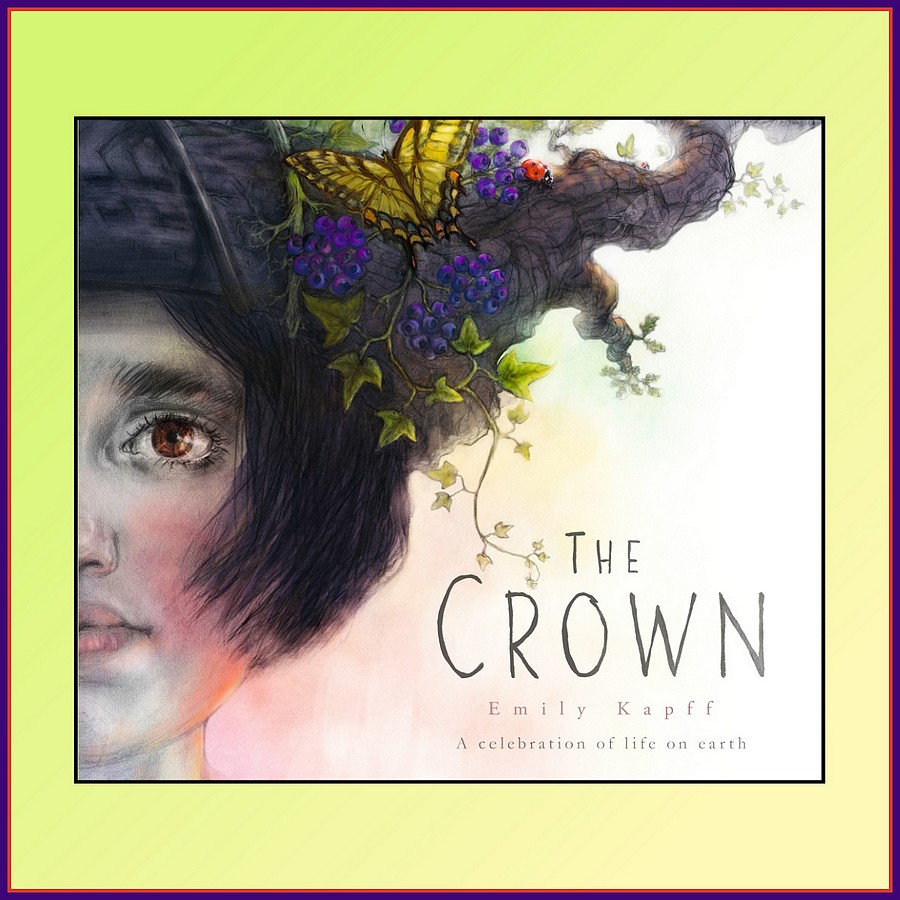
The Crown lyrically written and atmospherically illustrated by Emily Kapff is a stirring and thought provoking story about the role humanity plays as caretakers of this earth and the impact our choices have for the future. This story is told by a young girl living in the future on a barren land filled with waste, many items readers will recognise that have been discarded and have become landfill. This is ultimately an empowering story, one of hope as it explores the connection between now and the future and the potent agency humanity has to ensure future generations inherit a healthy and thriving world.
The spellbinding front cover features a girl with a glimmer of hope and optimism in her eye, meeting the readers. She wears a crown where nature’s treasures are the jewels. The back cover depicts the girl with a very different colour palette and crown. Her eye tells an alternate story. The back cover represents the girl in the future with a crown made of discarded items. When the book is opened it becomes one whole image of a girl with each side of her face telling a very different story from two different time periods.
The book begins with a Native American proverb which captures the central message of the story that “we do not inherit the earth from our ancestors, we borrow it from our children’.
The story starts with the girl speaking from the future and addressing the reader. She communicates that although she is not a princess, she has inherited a crown. This cumbersome crown doesn’t sparkle with treasure, rather it is constructed with trash and discarded waste. A car tyre forms the band of the crown which fits snuggly on the top of the girls head. To this a diverse range of objects have been attached – cans, cords, a mobile phone, plastic bottles, a remote control among many other recognisable items to form a crown. The girl’s only companion is a forlorn horse, their land is made of landfill.
Her eye is drawn to a particular piece of rubbish, something that has been left behind. It is a book, a portal to the past, a connection between the past and her future. When she opens the book “there is a fairy tale”. The girl is transported to a faraway land where she immerses herself in a world of vibrant colour, life, wondrous, mesmerising, illuminating sights from the depths of the ocean teeming with animals and colourful coral to the infinite skies with the spectacular sights of winged animals in different shapes, sizes and colours flying and buzzing through the air. The fairy tale in the book continues to a jungle, another lively environment, a rich ecosystem with chimpanzees swinging from the majestic treetops and the jungle floor sprouting with fungi, as well as sprawling tree trunks covered in animals. A leopard gazes out and is in the company of an iguana and armadillo amongst other creatures.
The line, “we have never met, you and I” is repeated throughout the story as two different time periods are represented, yet they are connected, interdependent, they transcend the passage of time. This story conveys in a non-didactic and hopeful way the message that each of us are caretakers of this precious world and this story is a call to action to adopt sustainable practices and environmental responsibility. The reader has the power to contribute to a healthy, strong planet and to determine what crown they will bestow future children.
Emily Kapff’s exquisitely detailed illustrations deftly capture the girl’s emotions and reactions to her environment and the ones depicted in the fairy tale. The contrasting colour palette used to represent the future (monochromatic, grey and bleak) in the beginning of the book compared to the fairy tale which is the world we inhabit (vibrant and colourful) serves to highlight the difference our actions can make and the impact our choices have. There is so much to unpack in these illustrations and they would serve as a springboard into conversations about sustainable practices.
At the end of the story Emily Kapff has used the rings on felled tree trunks as a canvas to creatively layout questions to encourage reflective thinking about actions that can be taken to ensure the planet that is left for future generations is a thriving and healthy one. A planet where future generations inherit a crown that can be filled with treasures.
